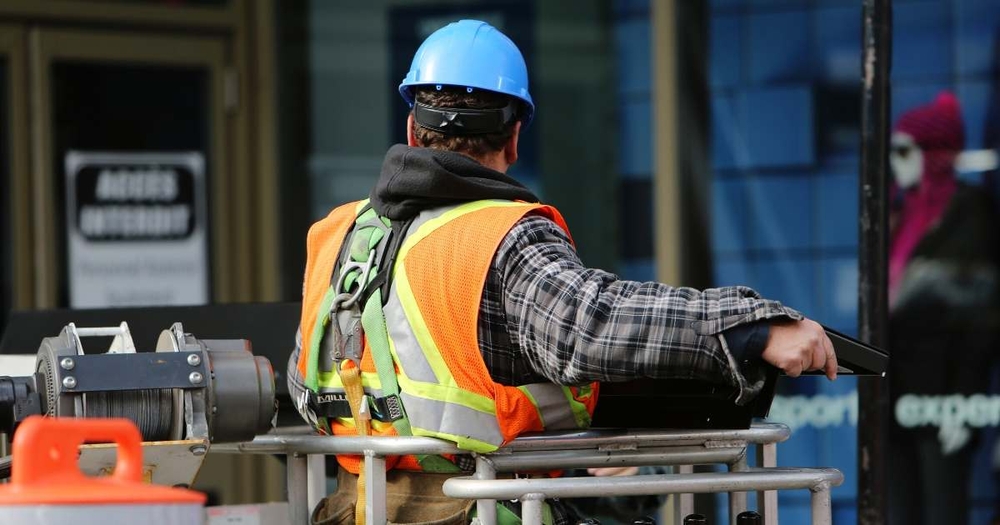
What is the one piece of equipment you see nearly every construction worker wearing? A hard hat or safety helmet. Head safety is of the utmost importance on any job site, but have you ever taken the time to think about the standards to which these essential pieces of personal protection equipment (PPE) are held? OSHA standards exist to minimize workplace injury and there are specific standards which safety helmets are required to meet.
In this article, we will explore the need for safety helmets in the workplace and delve deeper into safety helmet standards. You will also receive an overview of the color guidelines for safety helmets and recommendations for the top products on the market.
Not all working environments require head protection, but it is a good idea to wear a safety helmet when there are apparent signs of danger. Industries like construction, mining, forestry, power, oil, and gas all pose serious risks for injury which is why you see most of these workers wearing safety helmets.
Here are some of the most common hazards safety helmets can protect you against:
According to the Bureau of Labor Statistics, there were 2,200 fatalities caused by head injuries between 2003 and 2010 and roughly 84% of workers who suffered head injuries were not wearing proper head protection.
Serious head injuries have the potential to cause long-term damage or even death. Some of the most serious injuries include memory loss, fractured bones, and spinal damage, some of which may not be curable. In fact, traumatic brain injuries (TBI) are a significant cause of death and disability in the United States, contributing to about 30% of all deaths caused by injury. The best way to protect yourself is to wear a safety helmet certified for the type of workplace hazards you are likely to encounter.
The Occupational Safety and Health Administration (OSHA) mandates specific requirements for workplace head protection. They also state that, regardless of the industry, it is the employer’s responsibility to ensure that all workers wear head protection when there is a potential for exposure to workplace risks and hazards.
The two OSHA standards that regulate safety helmet requirements are:
Both of these standards require workers to wear safety helmets if there is any risk of being struck by falling objects, bumping their heads on fixed objects, or coming into contact with electrical hazards. In terms of selecting head protection, OSHA requires that safety helmets comply with ANSI/ISEA Z89.1. This simply means that if a helmet meets ANSI Z89.1 it is OSHA compliant.
In order to be OSHA compliant with the ANSI Z89.1 standard, safety helmets are tested for performance and assigned a safety helmet type and class such as the following:
All safety helmets and hard hats are required to have a hard outer shell and a shock-absorbing lining that incorporates a headband. Other than that, there are two types of safety helmets for impact protection: those designed to reduce the force of impact resulting from a blow to the top of the head and those designed to reduce the force of impact to the top, front, back, and sides of the head. For electrical protection applications, safety helmets are divided into Classes G, E, and C and must be labeled for their operating temperature range: low (down to -30°C) or high (up to 60°C).
Color is also an important consideration, and not just for job site fashion. Though workers in the United States are often required to wear safety helmets on-site, there are no official rules regarding color. There are, however, some standard colors that many job sites tend to use:
Though these are the most commonly used colors for safety helmets on the job, not every job site may follow these color guidelines. If you are uncertain which color you need for your safety helmet, talk to your site manager or supervisor.
Not all safety helmets are created equal and it is your personal responsibility to choose the helmet best suited to your work and to actually wear it on the job. Be sure to consider the potential hazards determined by your line of work as well as the proper color designation for your role.
Here are some of the top recommended hard hats and safety helmets on the market:
If you are having trouble deciding between different hard hats, you can never go wrong by choosing the highest level of protection. Even minor head injuries can lead to serious consequences and lost workdays, so it simply is not worth taking the risk. Always wear your helmet!